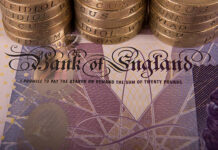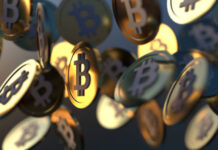Markets
Central banks stepped in to counter an aggressive selloff on bond markets but with mixed results. The Bank of Korea announced buying plans (5-7tn won) for the coming months. The Reserve Bank of Australia pulled out the big guns with an unscheduled A$3 bn purchase to defend its 3-year yield target. While that succeeded, the selloff at the long end of the curve continued with another 17bps steepening. In New Zealand, governor Orr repeated the central bank could stimulate further with a negative policy rate (long rates still up 4 bps) while the Bank of Japan said it will continue with yield curve control and will not raise its 0% 10-yr yield target (closed at 0.16%). ECB’s Lane (ECB has “without a doubt” more ammo) pulled off a similar verbal trick in European pre-market hours. Schnabel later warned that rising real long-term yields may hurt the recovery and that the ECB may have to do more if so. She said the central bank still has some room to cut but tied it to the condition of benefits outweighing costs. The comments, along with some technical considerations after yesterday’s surge, dragged German and broader European yields down. The German yield curve bull flattens with yields 3 (10-yr) to 5.8 (30-yr) bps lower at the long end. We do question the lasting impact of verbal interventions though, having Lagarde on Monday in mind. Peripheral spreads to core tighten for a first time this week with Spain and Portugal (both -3 bps) outperforming. UST’s outperform the German Bund with yields 2.9 bps (2-yr) to 6.6 bps (30-yr) lower, primarily on the account of inflation expectations. The now-closely watched 5-yr gauge remains north of 0.75% however. The US PCE deflator came in a tad stronger than expected in January (both headline and core at 1.5% y/y from 1.3% and 1.4% y/y respectively) but with limited direct impact on (bond) markets as it says little about inflation going forward. Despite the easing in the bond selloff, European equities trade on edge with losses of 0.5-1%. Wall Street opens mixed with the Nasdaq gaining 1%.
Classic risk-off dynamics (equities and core bond yields down) for once feed through in currencies as well. The dollar and the Japanese yen lead the G10 scoreboard. Cyclicals (NZD, AUD) lag. EUR/USD finished below 1.22 yesterday and is extending the trip south to fill bids in the 1.213 area after hitting support at the lower bound of the short term February upward trend channel (nearby 1.21). Similarly, DXY tested the upper bound of the mirror trend channel at around 90.8 before paring back the gains to 90.52 (up from 90.13). USD is taking the upper hand over the yen, extending gains beyond 106(.40). EUR/GBP rebounded from the 0.86 area yesterday and initially rallied further to trade north of 0.87. The Schnabel and Lane comments dented the pair’s, currently at 0.869, momentum however. For EUR/GBP’s ST rebound to continue, it should at least close above 0.87 to break the downward trend channel.
News Headlines
Bank of England chief economist Haldane thinks that there is a tangible risk that inflation proves more difficult to tame, requiring monetary policy makers to act more assertively than is currently priced into financial markets. He called inflation a tiger that has been stirred by the extraordinary events and policy actions of the past 12 months. One of the reasons for concern is that there is far less slack in the UK economy compared to the 2007-2009 financial crisis. Other triggers are the savings glut and public spending. The hawkish comments mark a stark contrast with the general global rhetoric not to take the punchbowl away.
The Indian economy returned to growth in its third fiscal quarter (Q4 2020: 0.4% Q/Q) following two consecutive quarterly declines. Breaking down the numbers shows good performances from agriculture and manufacturing while services were more mixed. The government’s annual GDP estimate (fiscal 2021) was downwardly revised to -8% which suggests a 1.1% Q/Q GDP decline in fiscal Q4 2021 despite the country’s rapid vaccination process, fiscal stimulus and central bank liquidity support.














